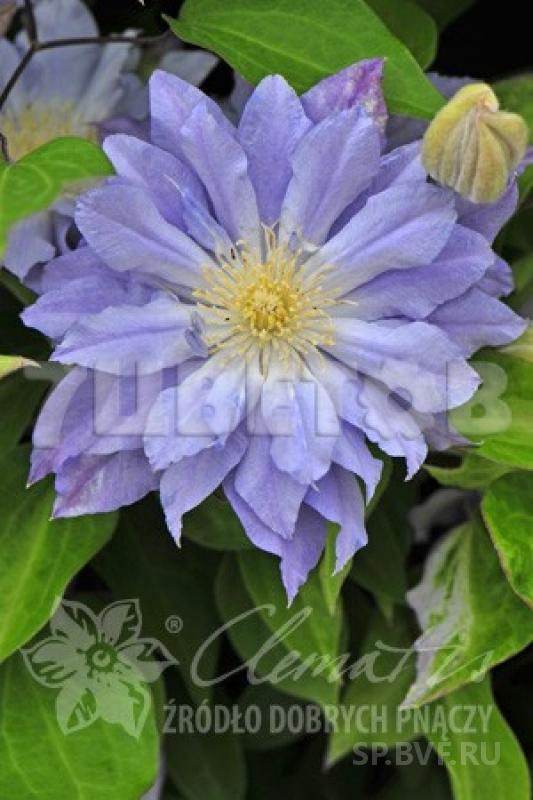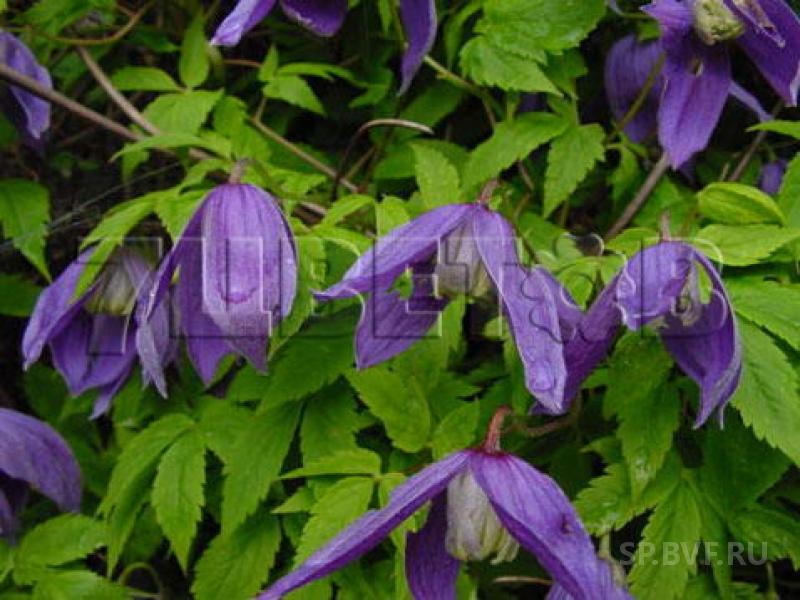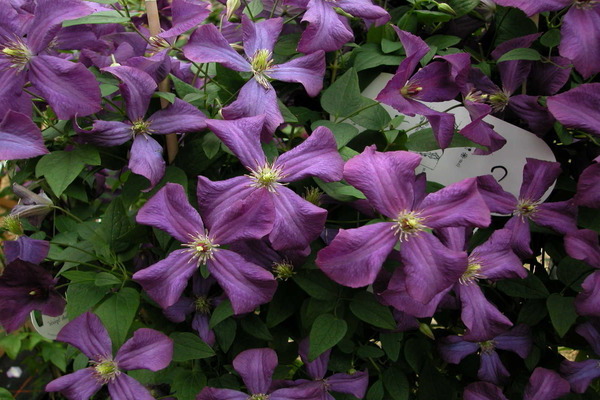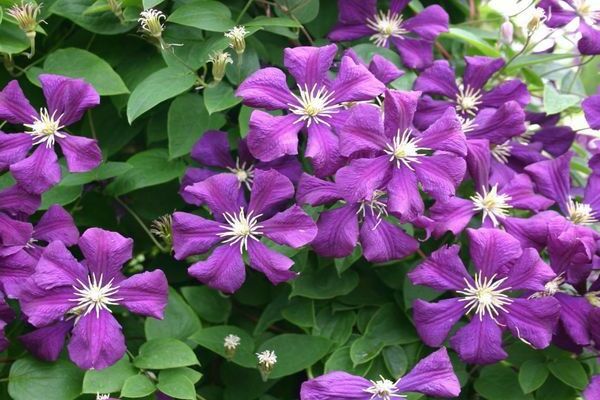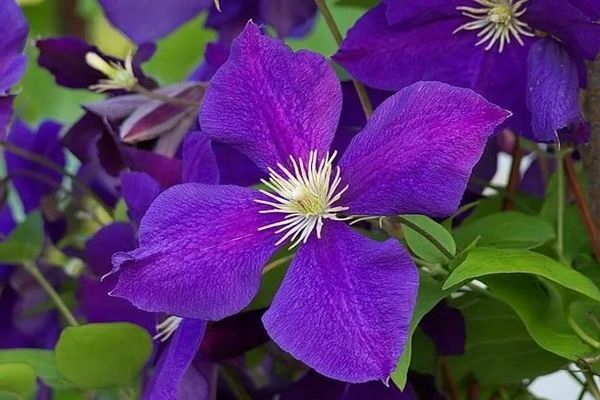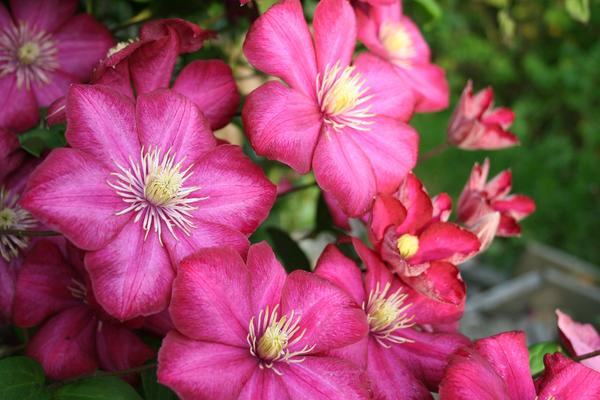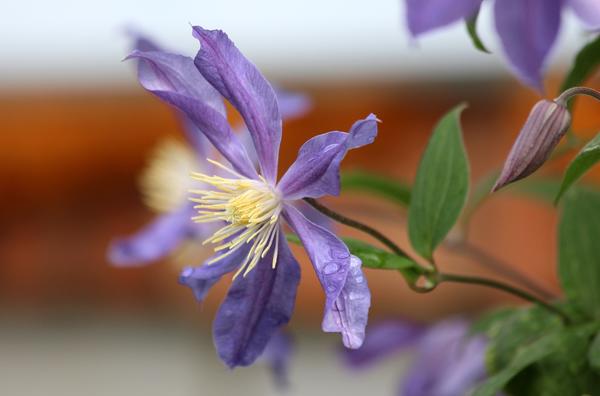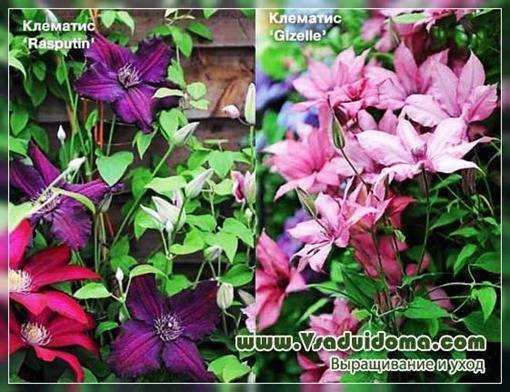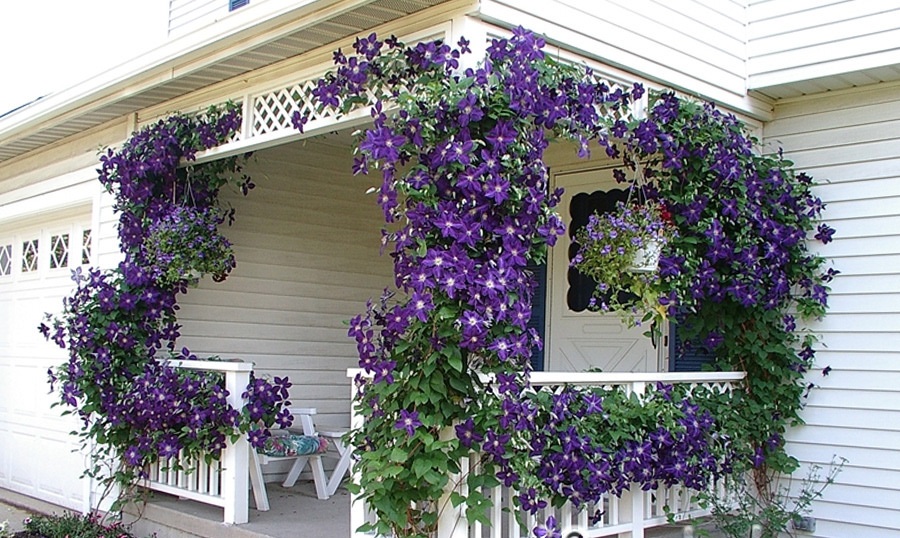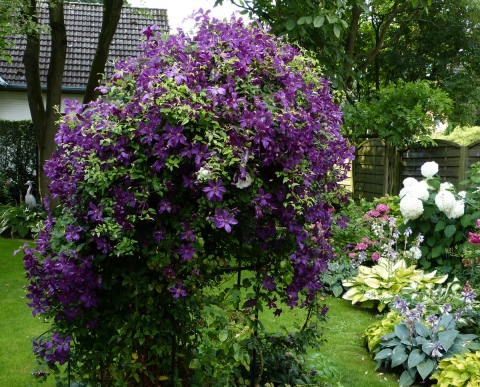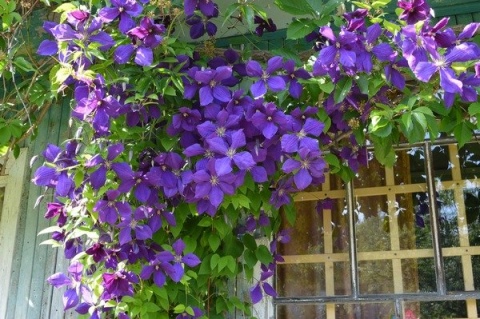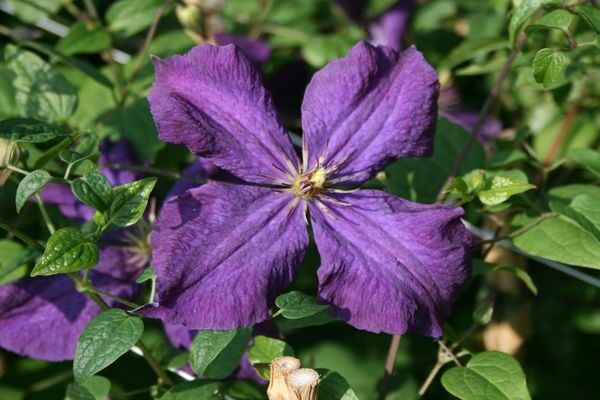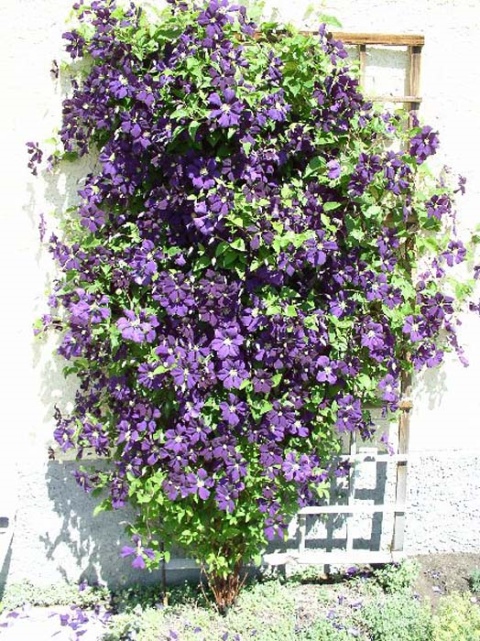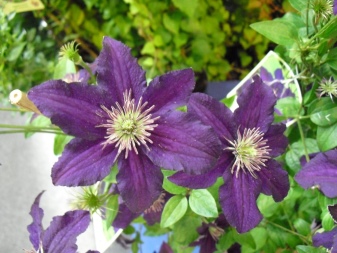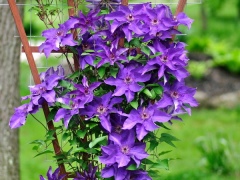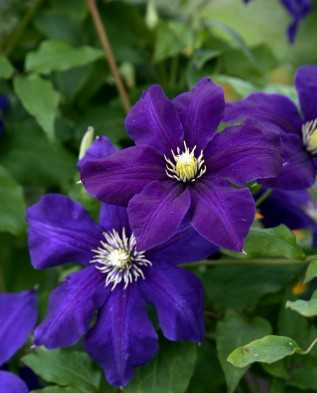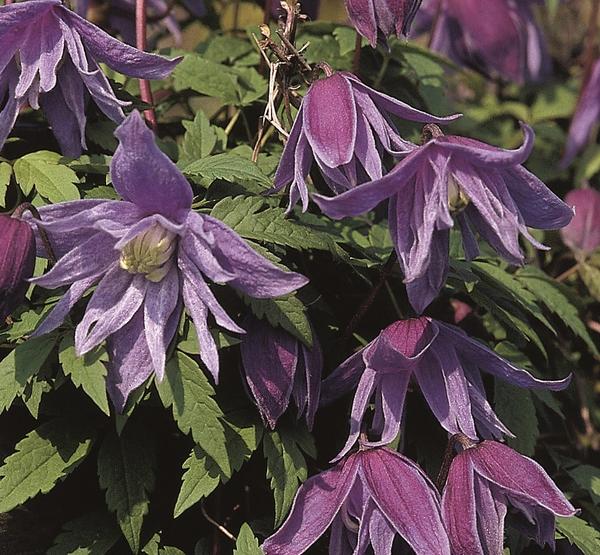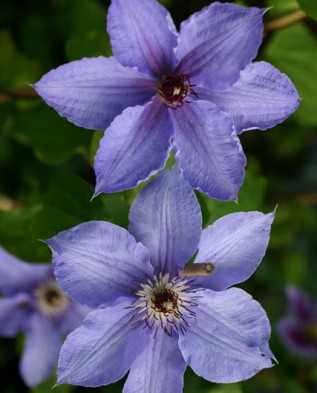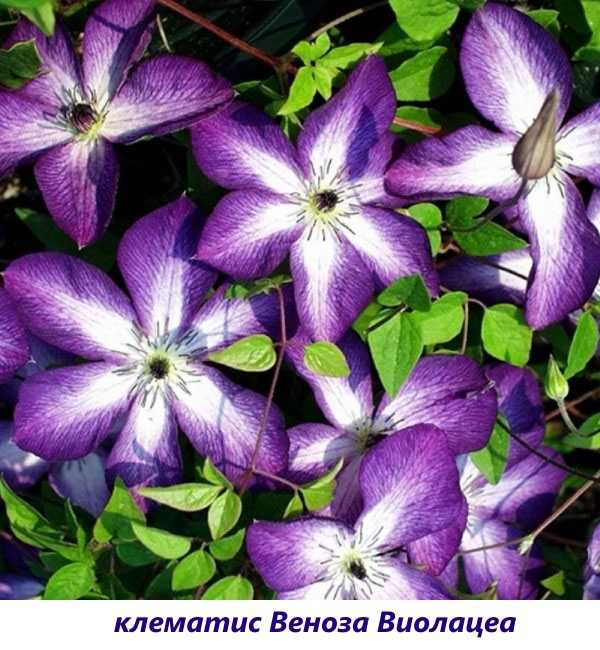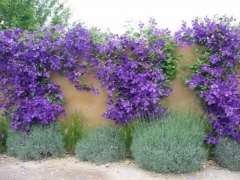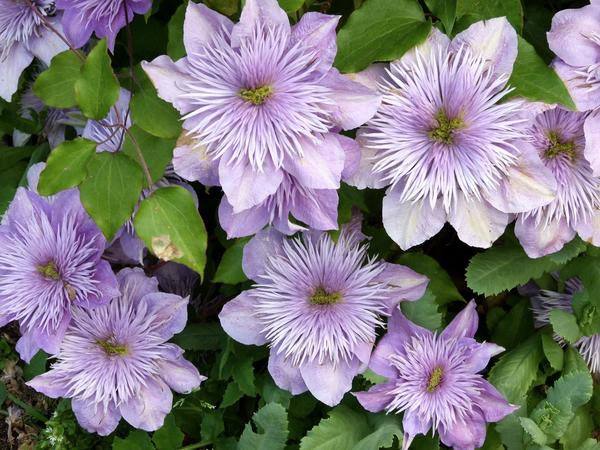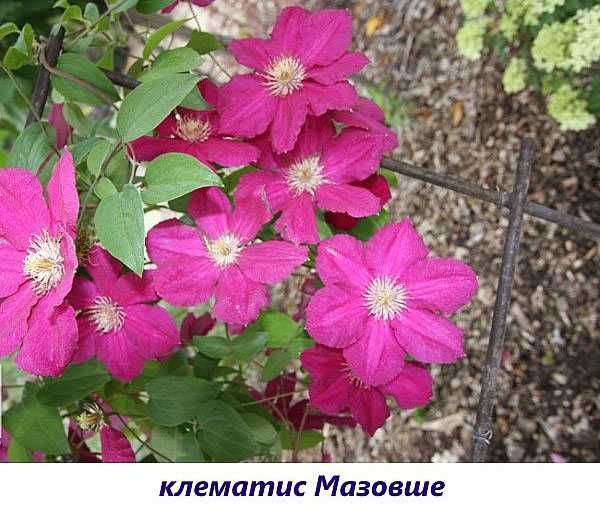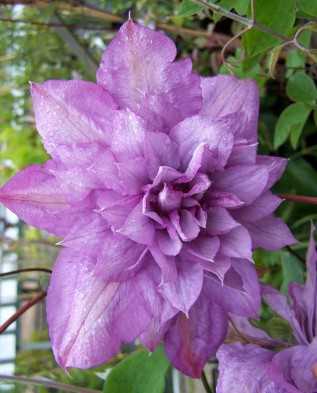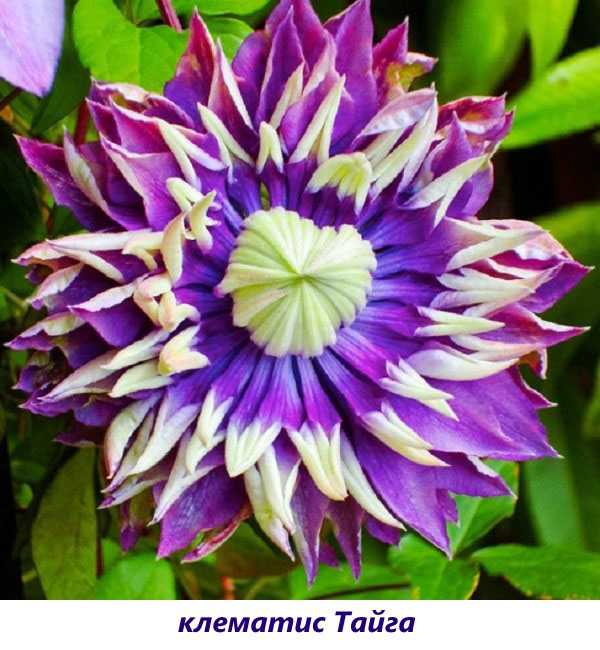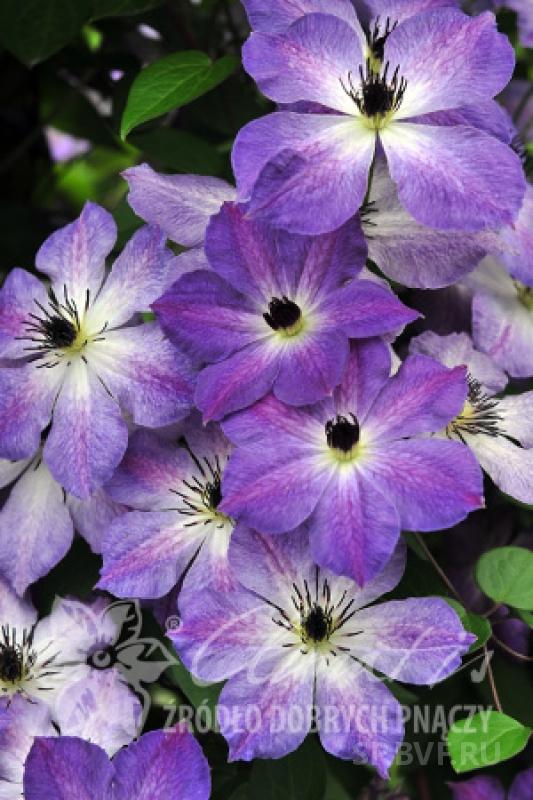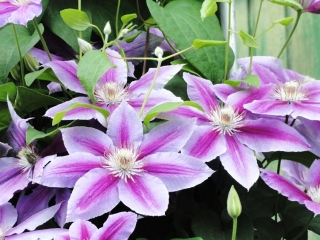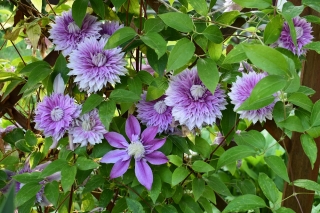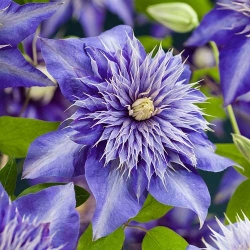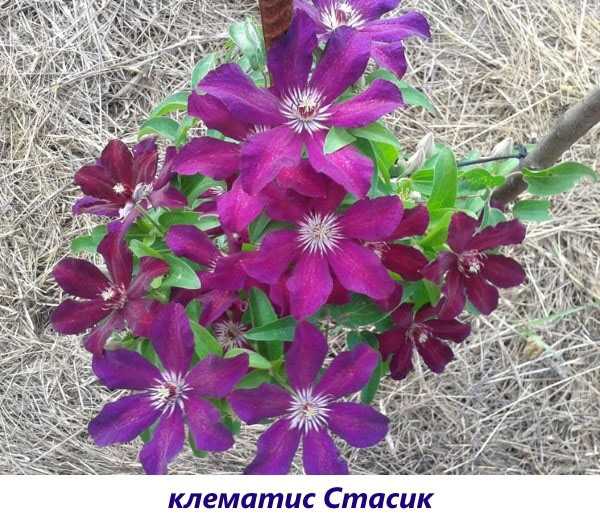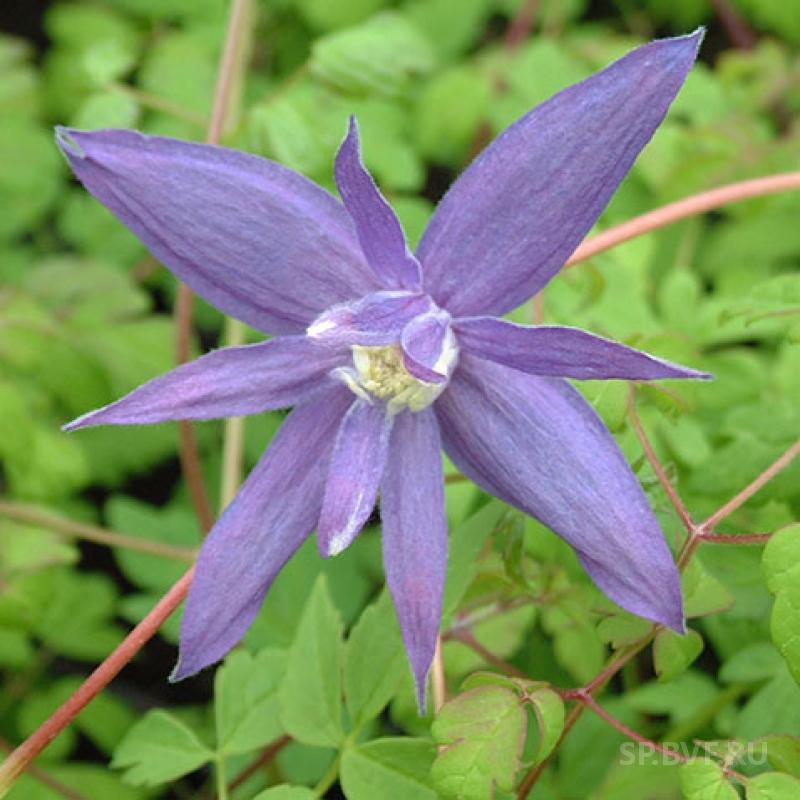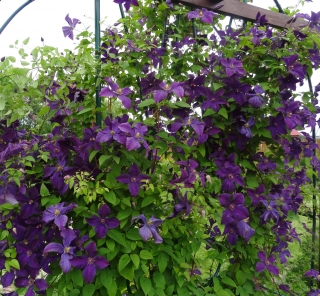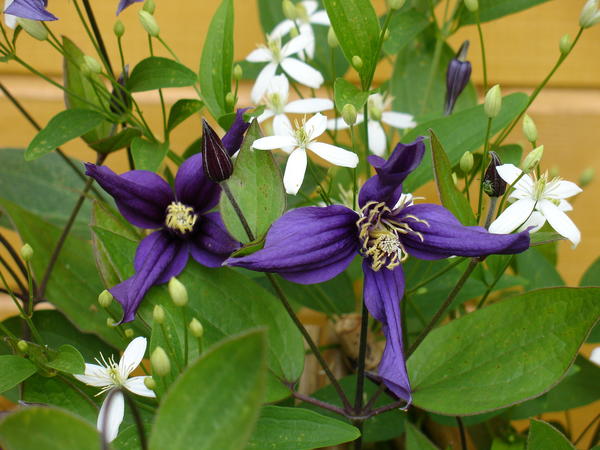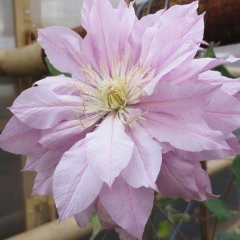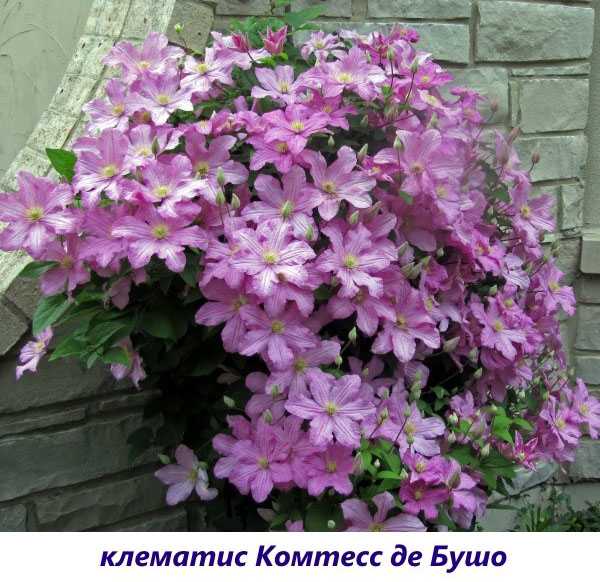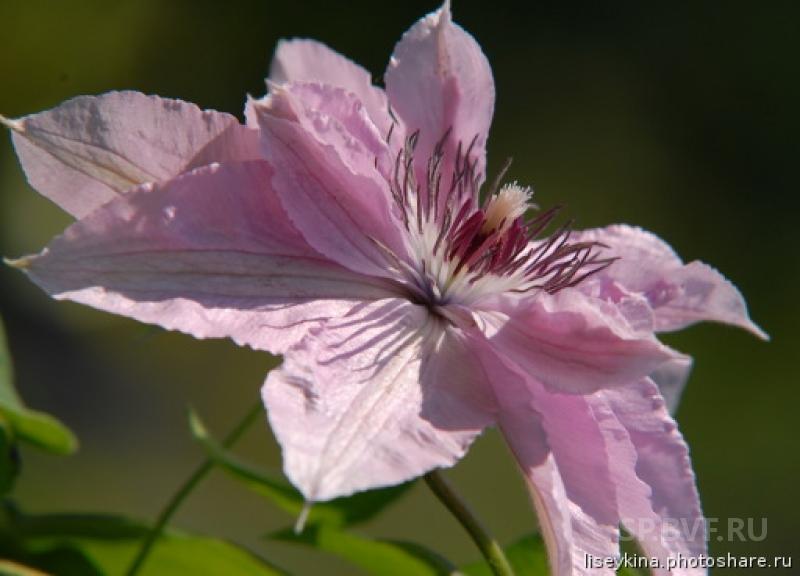Clematis Arabella: variety description and features
Clematis Arabella: photo of the variety
Clematis Arabella was bred by British breeder B. Fratwell in the early 90s. 20th century. The species was named after the daughter of the Lords Hershel, the wife of Lieutenant General J. Kizheli.
There is another type of Arabella clematis. But it was bred in the 19th century, its inflorescences were painted in white, now the variety is considered lost for breeding.
Considered by us variety differs from other varieties clematis in that it does not have the ability to climb, which is unusual. It belongs to the type of clematis "Integrifolia", translated from the Latin "Whole-leaved". Indeed, the leaves of the flower are not dissected, in comparison with other clematis, and are slightly pubescent, so you might think that the ancestors of this variety were from the Lanuginoza group, which means “Woolly Clematis” in Latin.
The bush is in the form of a fairly regular raised hemisphere, the shoots are raised, overgrown, densely cover the bush. Moreover, the shoots do not cling to anything, for this reason, when cultivated on props, they need a constant garter to the support, comparable to climbing roses. Because of this characteristic, the cultivar often grows as a ground cover plant.
Shoots grow in length by 1.5-2 m. But if clematis grows like a ground cover plant, it can reach a length of 3 meters.
The flowering of botanical clematis Arabella occurs on the shoots of this season, for this reason, clematis belongs to the 3rd group of circumcision. The flowers are unique: when they begin to bloom, they acquire a deep, bright blue-purple coloration. With further flowering, the coloration becomes paler, and the flowers acquire a bluish tint. The petals are oblong, not pressed to each other, located separately, the flower can have 4-8 petals. Anthers with stamens are cream-colored, when they open, they can turn yellow.
Small flowers - 7.5-9 cm, when open, directed upward and to the sides.
Clematis varieties Arabella begin to bloom early enough, everything here depends on the cultivation area, in principle, flowering is observed already in the first summer month. Plants bloom for quite a long time, including September-October, here as the weather permits. After heavy rains, the bush may disintegrate, the flower may not be so beautiful for some period of time, but over time, new shoots with buds will appear from the buds, and then the plant will continue to bloom again.
Reproduction
For reproduction, Etual Violet uses methods: cuttings, shoots abduction, making a bush. Sowing seeds does not preserve all the characteristics of the variety. Most often, clematis is propagated by rooting cuttings.

Clematis etoile violett
Cuttings
Cut off the shoot with one knot and two leaves. One leaf is removed to reduce the evaporation area. A layer of fertile soil is poured into the box, and coarse sand is on top, moistened. The cuttings are deepened and covered with foil or plastic glasses (every day the cover is removed for airing). You can understand that the seedlings are rooted by the awakened buds.
Dividing the bush
This method can be used every 5 years so as not to interfere with the development of the shrub. The bush is dug up and divided into 2-3 parts with buds and the same number of roots. Delenki are planted in the usual way in dug and fertilized soil, watered regularly.
Avoiding shoots
The soil near the mother bush is dug up, mixed with wood ash and sand, well loosened and watered. On the shoot, the leaves are removed, bent to the ground and fixed with wire. The knot is sprinkled with sand and moistened. The cuttings take root within 1-1.5 months.
Planting and leaving
Clematis "Violet Elizabeth" is a fairly hardy and winter-hardy variety. It grows and blooms normally in the Moscow region, although it requires careful covering.
Well-lit areas with light, fertile soil are best suited for planting.
It can be planted both in spring and autumn, and carefully transshipped also in summer, but in summer it is easy to break the shoots. The variety is responsive to feeding (more about feeding clematis)
The “Violet Elizabeth” pruning group is the second: clematis is pruned at a height of about 60 ... 80 cm above a pair of strong buds. Wintering shoots must be carefully covered, but so that they were dry. In the spring, they must be removed as soon as the threat of severe night frosts has passed, and carefully tied to the supports. Pruning in the third group is possible, but in this case clematis will bloom only once at the end of summer and rather weakly.
Description
Clematis "Violet Elizabeth" can grow up to 3.5 meters in height, although it is usually still smaller. Shoots can cling to supports with leaf petioles. Flowering on the shoots of last year begins in May and usually ends in mid-June; clematis blooms on the shoots of the current year towards the end of August.
Flowers on the shoots of the last year are always semi-double, on the shoots of the current one they can be semi-double or simple, but they are always very large - from 14 to 20 cm in diameter. Sepals are lanceolate with pointed tips, up to 8 cm long and up to 3 cm wide, often slightly bent along the middle strip. The color of the sepals is pale pink or pinkish white. The middle stripe is always highlighted in color - in light sepals it is pink, and in more unsaturated sepals it can be greenish-yellow. Filaments and anthers are yellow.
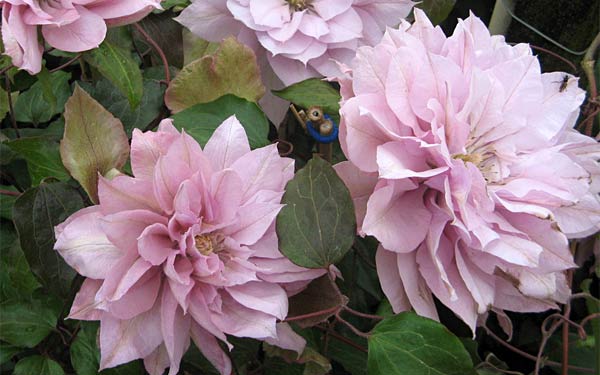
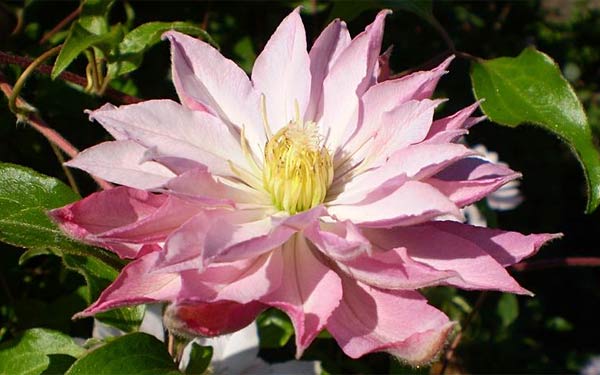
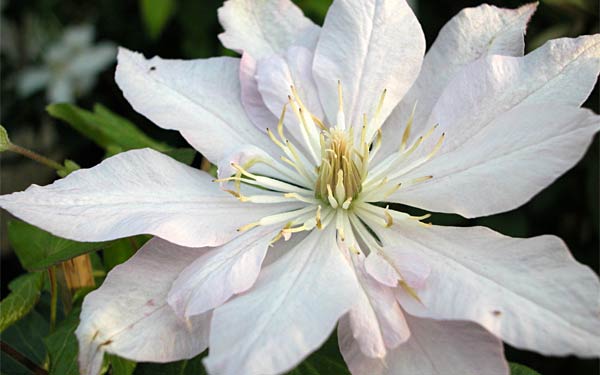
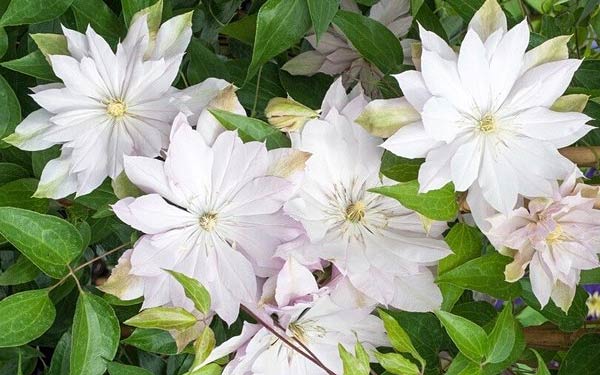
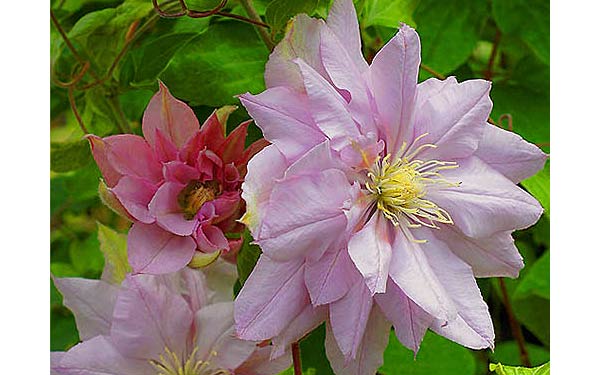

Clematis Viticella
The group of clematis, according to numerous reviews of specialists, which are in special demand among gardeners, include the very fashionable now purple clematis or Viticella clematis. These tree-like, tall vines blooming on young shoots, beautiful, not very large, numerous flowers, pleasing to the eye with a variety of violet-lilac shades. They are known for their winter hardiness, endurance and a wide selection of forms and varieties that bloom all summer.

"Purple Plena Elegance" is one of the oldest varieties of purple clematis, known in France since the end of the 19th century. It remains in demand due to its unpretentiousness, romantic showiness of terry burgundy-red decorative flowers. Gradually blooming, they retain the colorfulness of a tall (up to 3 meters) bush from July to October.
Large velvety purple-violet flowers of the Etoile Violet variety will not leave indifferent even sophisticated connoisseurs of flower growers.
The Ville de Lyon variety, bred in France more than a century ago, is popular. Its red-brown, more than three meters in height, trunk and large (10-15 cm) carmine-red flowers can decorate the most exquisite flower gardens.
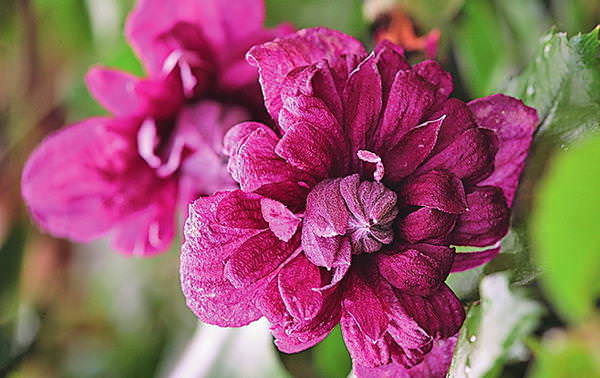
Landing features
It is better to plant clematis in spring or autumn. Spring planting is carried out in April, autumn planting - a month before the onset of frost. In the summer, container plants can be planted without disturbing the earthen coma (by transshipment).
Selection and preparation of a seedling
A seedling with one or two shoots and elastic roots from 10 cm long is suitable for planting. The roots should not be swollen or damaged. If they dry up during transportation, the plant is placed in water for 6-7 hours.
Pick-up location
Etoile Violette prefers well-lit areas (at least 5 hours of sun per day). It is necessary to choose a place protected from the wind, where water does not stagnate.Clematis loves loose, fertile soil with a slightly acidic to slightly alkaline reaction.
Technology:
- For planting, dig a hole with a depth and diameter of 60-70 cm.
- A drainage layer (broken brick, expanded clay, crushed stone, small pebbles) is laid on the bottom.
- The removed soil is mixed with humus, peat and compost, a glass of wood ash and 100 g of superphosphate are added.
- Their substrates form a mound on which the plant is placed; gently spread the roots down the hill.
- Pour a bucket of settled water.
- The remaining soil mixture is poured, deepening the root collar by 7-8 cm.
- Establish a support for the seedling.
- Another watering is carried out, the soil is mulched.
Variety "Tangut Radar of Love"
Tangut clematis comes from Mongolia, Western China, where it has been known for over 120 years. It tolerates severe winter very well, therefore it is widespread in Russia, from west to east. May be a short shrub used for curb gardening. Climbing the support up to three meters, it forms dense, dense thickets.
Its fruits, ripening by the end of summer, have the appearance of silvery seed-fruits, they are used in dry bouquets. It is widely used for landscaping walls, balconies, decorating hedges and gazebos. Feels great as a houseplant - in pots.

Diseases and pests
| Problem | Symptoms | Prophylaxis | Treatment |
| Aphid | Colonies of insects settle on the back of the leaves. The sheet plate rolls up and dries. | Proper care (watering, feeding, mulching). Planting calendula next to clematis (this attracts ladybugs that eat aphids). | Remove dry leaves, wash the bush with a solution of tar or laundry soap.
Spray with Fitoverm. |
| Powdery mildew | White bloom, wilting and stunted growth. | Moderate watering. Disinfection of garden tools.
Manganese tillage, ash sprinkling. |
Cut off the affected parts of the plant. Treat with copper sulfate. |
| Wilt | Vine tissues lose their turgor, wither, dry out. | Avoid waterlogging. Disinfect tools, soil and drainage. Choose a landing site with good lighting. Carefully inspect the seedling upon purchase (for foreign stains and damage). | Trim off any damaged stems and burn. Treat healthy parts of clematis and soil with Fundazol. At a late stage, the disease cannot be cured - the bush must be dug up and destroyed. |
Cutting group No. 1
This group includes varieties that form buds only on old branches, young shoots have practically no flowers. Everything clematis 1 trimming group easy to care for, so if you wish, you can skip it. And mountain Rubens does not require pruning at all. If the liana is trimmed, then in the minimum amount. That is, you can remove the weakest, driest twigs. Many experts advise pruning clematis from this group once a year and only after flowering.
Indeed, at this time, damaged, dry and poorly developed branches are clearly visible. After pruning, the remaining branches will receive more nutrients. If these are botanical varieties, then they are quite frost-resistant, but hybrids need to be protected from frost. Vines from this pruning group boast terry, beautiful flowers. These include Clematis Yulka, Maidwell Hall, and Lemon Dream.
Clematis trimming groups
By the type of care and pruning, clematis are divided into 3 groups.
- 1 group. This group includes those varieties of clematis that do not need pruning.
- Group 2. This group includes those plants in which, immediately after they bloom for the first time, cut off those stems that grew in the last season, and before winter it is necessary to cut off the shoots of the current year.
- Group 3. This group contains plants that are either completely cut or 15-20 centimeters above the ground. The same group includes those clematis in which the shoots die off on their own. You do not need to trim them.Dead shoots must be removed manually, without knives and secateurs.
It is worth noting that the young planted clematis, regardless of the pruning group, must be completely pruned in the first year of life in the fall. This is done so that the plant does not freeze over the winter, and also so that the next season the plant begins to develop with even greater vigor.
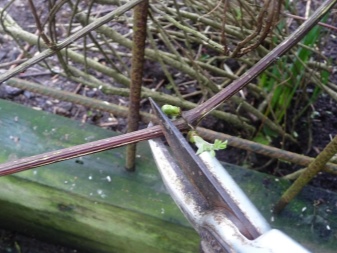
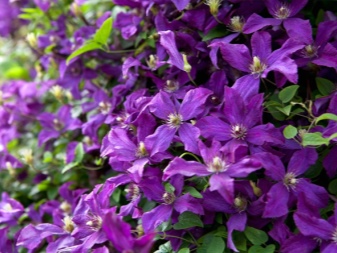
Tips for growing clematis
Clematis are a large group of cultivars that need a personal touch, but there are some general rules for growing them.
When growing them from seeds, you must:
- pre-soak them for several days;
- then it should be planted in containers with light, loosened, fertilized soil (sand and earth 1: 2);
- the seeds are placed on the surface, sprinkled with a layer of earth for a couple of centimeters and slightly pressed;
- soil temperature should be at least 20 degrees;
- it is better then to cover the surface with a film, not forgetting to periodically remove it for ventilation;
- watering should be moderate, it is better to do it through a sieve.
Proper planting and plant care is essential to success:
- the landing site is chosen bright, protected from gusty winds. Plants should not be planted close to metal fences, shielding the burning rays of the sun on them, next to the roofs of houses, from where water can drain onto them;
- the soil should be loamy, slightly alkaline, loose;
- watering plentiful, but not too frequent;
- fertilize the soil before planting, before and after the flowering season;
- the roots of the plant need to be shaded, mulched with a layer of peat, moss, regularly renewing it;
- plants need regular weeding;
- heavy vines need reliable support.
In addition to growing from seeds, vegetative propagation of clematis is also used by dividing the bush, cuttings and layering.
You can find out more about clematis here.
Planting and leaving
In order to get good flowering in all varieties of clematis, you need to adhere to a few simple rules that will help make the buds of the plant large, lush and numerous.
It is better to plant all varieties of clematis in a sunny place that is protected from drafts. The plant loves fertile soil, which is saturated with oxygen and moisture in sufficient quantities. The ideal option for planting clematis is loam. Sour or salty soil is categorically contraindicated. If it happens to plant a variety on such a soil, you need to be prepared for the fact that the plant will develop very slowly, constantly hurt and bloom in small quantities, and perhaps it will not bloom at all.
This flower is planted either in spring or autumn. If you plan to plant in the spring, and the soil is not suitable for planting clematis, it must be prepared in the fall.
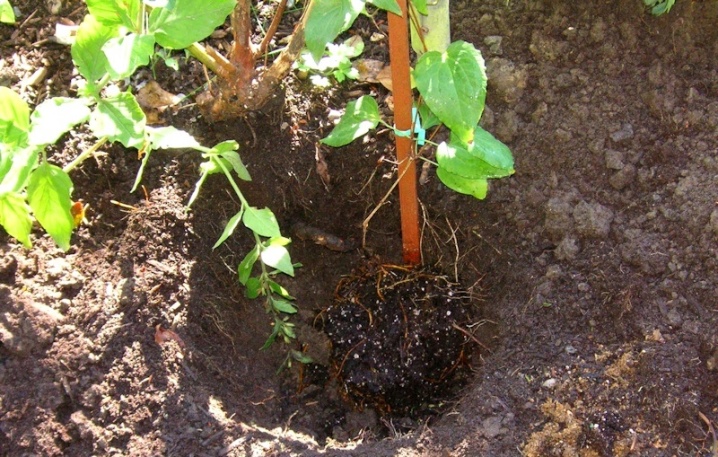
Clematis planting process:
- dig a hole 60x60x60 in size;
- before planting, the root of the seedling must be soaked for an hour in a solution of a fungicide and a growth activator;
- pour the drainage mixture (about 10-15 cm), ash (about 1 bucket), humus (1 bucket) to the bottom of the pit;
- then add top dressing, preferably mineral, about 100 grams.
On the sides of the pit, tapestries for lashes are installed. A small mound is made from the mixture in the hole, on which the seedling is placed and the root system of the plant is covered with fertile soil. The root must be set so that the neck of the root remains about 5 centimeters above the ground. After the seedling is planted in the ground, it must be watered abundantly with warm water.

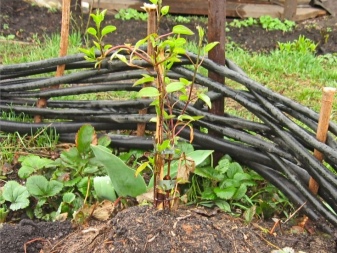
Almost all varieties of clematis are not whimsical to care for. Near the plant, you need to regularly remove weeds and loosen the soil, otherwise the rotting process may begin in the root system.
Clematis is very fond of moisture, so it must be watered often and abundantly. If there is little moisture, clematis flowers will decrease in size and quantity. An adult flower needs 2 buckets of water for one watering, one bucket will be enough for young plants, provided that watering is done 3 times a week.
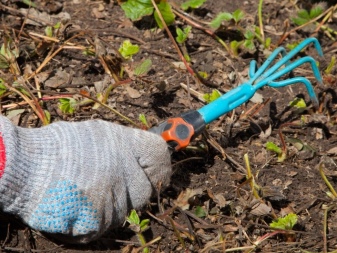
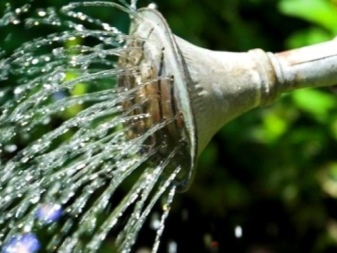
It is also necessary to regularly feed the flowers - this affects the quality of flowering. Without good feeding, the flowers will be crushed and their number on the plants will be reduced. It is best to fertilize once a month, during the spring and summer. There is no need to feed in autumn.
Such a plant can be planted next to gazebos or with a hedge - this is where it will look best. The plant has the ability to grow in height without harming it by clinging to a fence or walls.
Clematis Prince Charles: Landing
Clematis Prince Charles: photo
When planting, it must be borne in mind that this variety is considered very capricious, but if everything is done correctly, then there will be no problems with growing. We must follow some rules that will allow the culture to develop well.
- The first rule is that this crop should be planted in a well-lit area with little shade. Clematis Prince Charles loves warmth and light, and in the complete absence of these criteria, development becomes very slow and flowering may not occur at all.
- The soil must conduct oxygen well, so it must be well loosened before planting. Sandy or loamy soil is perfect for planting clematis. The soil should be fertile and nourished with nutrients. At the same time, in terms of acidity, the soil should be neutral or with a weak alkalinity index.
- Prince Charles loves moisture, so the soil should not be allowed to dry. To do this, you need to adjust the watering and carry it out as the soil dries up. So that moisture is retained in the soil, and not evaporated, you can plant low crops under the root of the plant. These plants will also protect clematis from overheating the root system.
You can also mulch the area around the root system. Mulching can be done with peat, turf, pine bark, moss or spruce branches. - It is not worth pouring Prince Charles clematis, as this will negatively affect clematis. To avoid stagnation of moisture, it is necessary to plant far from the ground water, and also install a drainage system during planting.
When to plant?
It is necessary to plant seedlings from December to March. The seedling itself is planted in spring or autumn. Before planting, it is necessary to prepare the soil. Preparation consists in digging and fertilizing the soil. Organic fertilizers are suitable for feeding.
Planting instructions.
To get a correct fit, it is recommended to follow the instructions.
- First you need to dig a hole, 65 centimeters deep and 70 centimeters wide.
- Then in the middle you need to install the support system, and then install the drainage system. Drainage can be expanded clay, broken brick or crushed stone.
- A layer of fertile soil must be laid on top of the drainage system. It must be prepared in advance. For this, peat, humus, sand, bone meal and wood ash are added to the soil. All this is thoroughly mixed and serves as fertile soil. This soil should be dumped in such a way that a slight rise appears.
- The root system of clematis is installed on a hill. Its roots must be well spread throughout the pit, and then covered with soil, tamping a little.
- Then you need to water and insulate the soil using peat.
Fertilization.
Clematis Prince Charles: photo
In order for Clematis Prince Charles to develop well, it is necessary to carry out top dressing that will nourish the soil and give clematis strength to grow and bloom. During the season, it is necessary to feed the culture about 3-5 times.
- When Clematis Prince Charles enters the phase of active growth, nitrogen should be added.
- When the period begins when the buds begin to form, potash must be added.
- After the plant has completely faded, it is necessary to add phosphorus fertilization to the soil.
Note: In no case should you apply any fertilizer during the period when clematis are blooming.
To make clematis grow quickly, you can add fertilizers based on other plants, mullein infusion or manure. In the summer, complex feeding, boric acid or potassium permanganate are perfectly absorbed. At the end of August, phosphate should be added to the soil, which will increase the duration of flowering.
Watering.
Clematis Prince Charles should be watered once every 7 days, on average about 18-22 liters per bush. If a hot period has come, then watering is carried out 1 time in 5 days. Watering directly depends on weather conditions.
Note: Clematis Prince Charles belongs to the third pruning group. That is, the buds formed on the shoot of this season must be completely cut off before preparing for the winter.
Preparing for the winter period.
If the Prince Charles flower grows in the southern regions, where winters are warm and there is no extreme cold, then shelter is not required. If there are cold winters in the area where the landing was carried out, then shelter will be needed. It is necessary to cover the plant when the frosts reach -8 degrees, it is during this period that the soil begins to freeze. Usually, this temperature is set in the first half of November, so it begins to cover in this month. Before covering, pruning is carried out, during which dry and sluggish shoots, leaves, and buds are removed. A thick layer of earth and peat can serve as a shelter.


